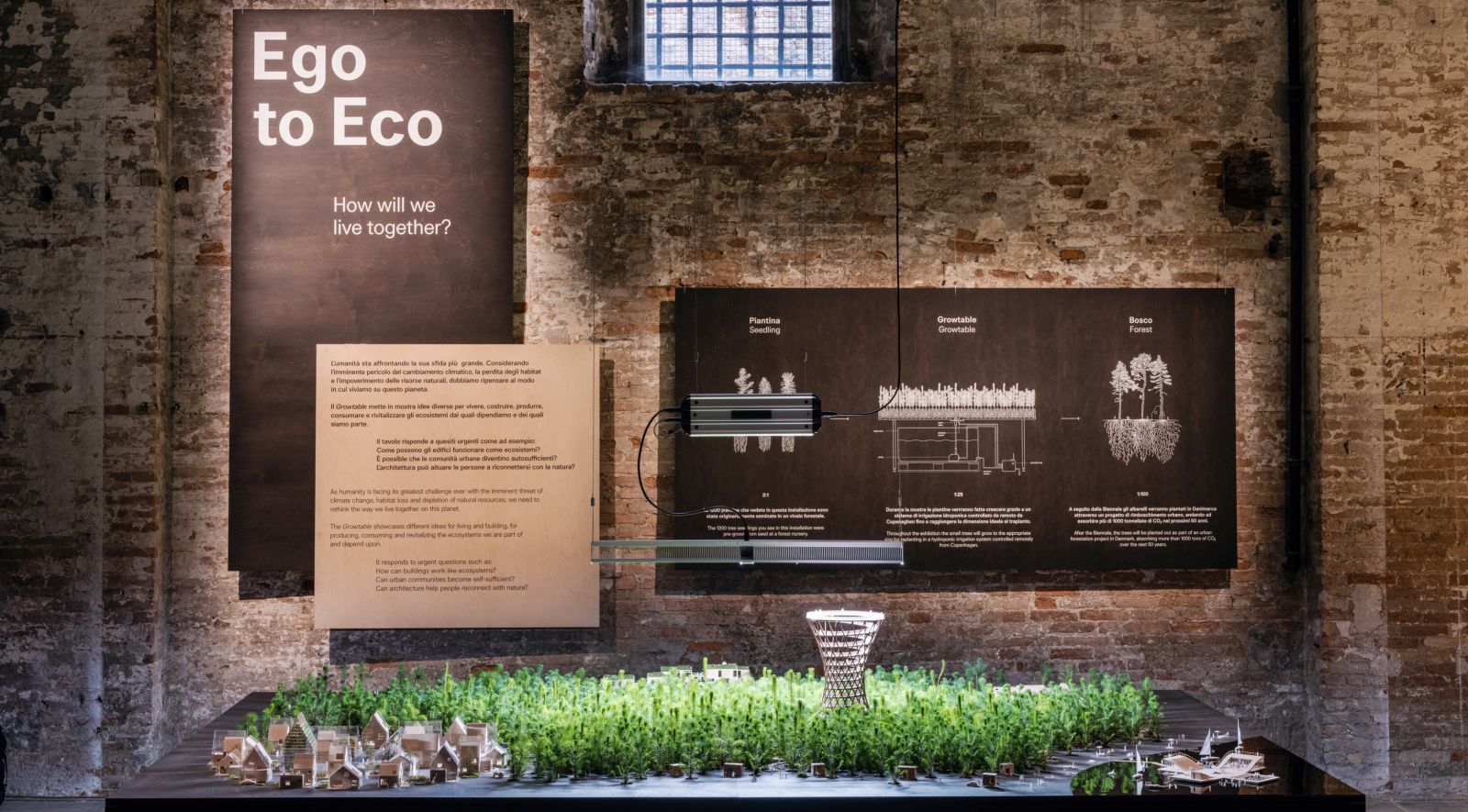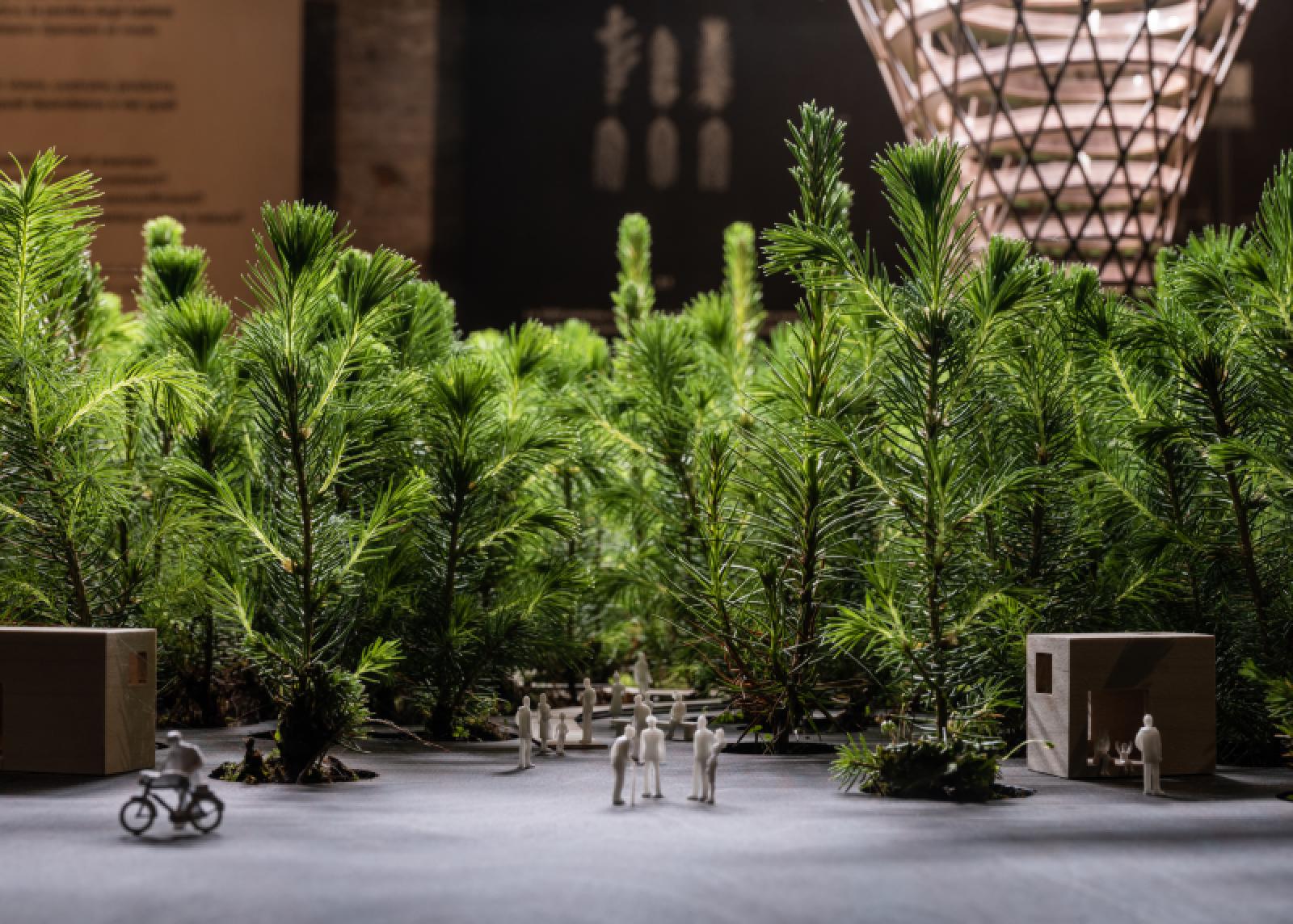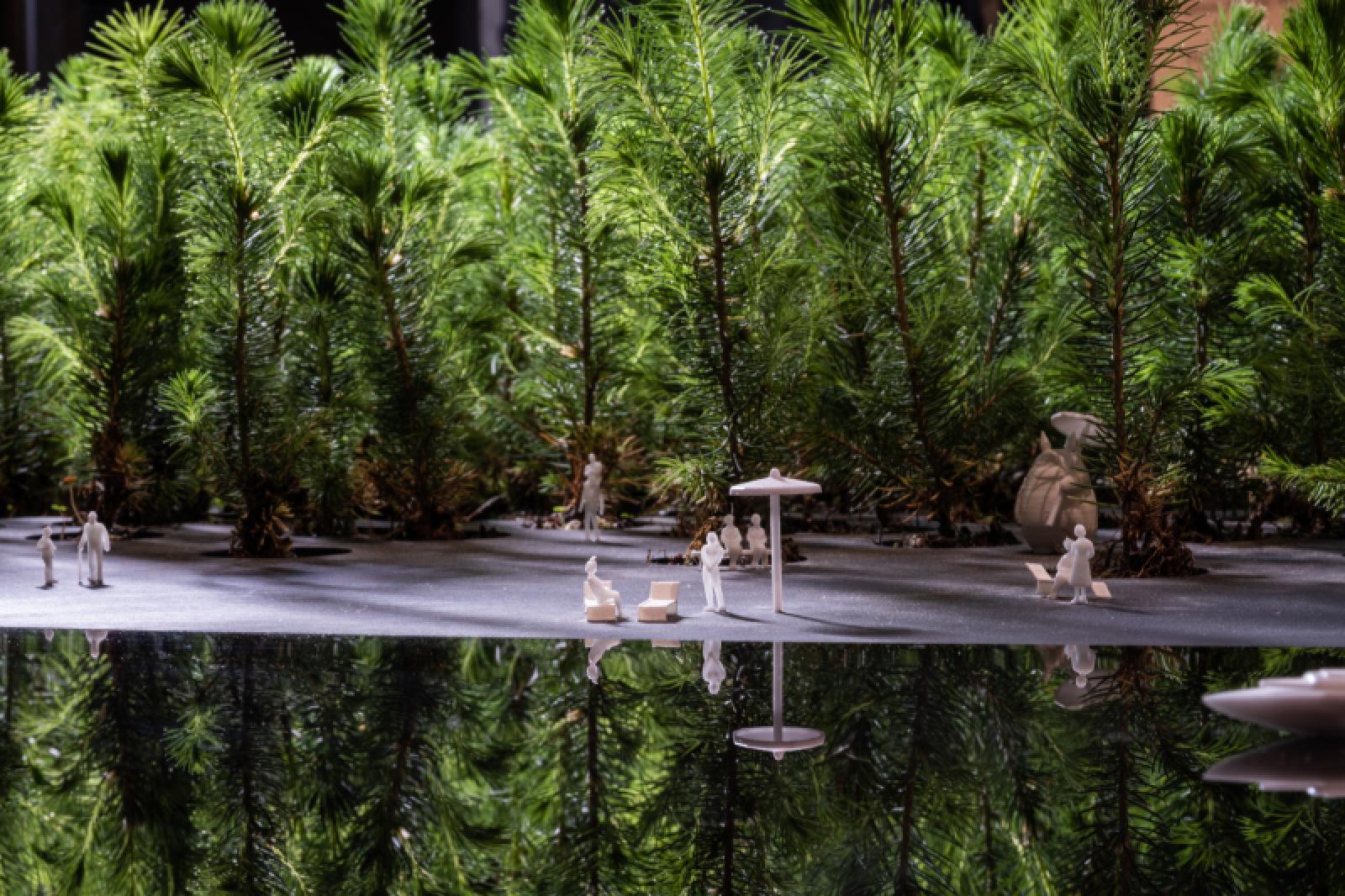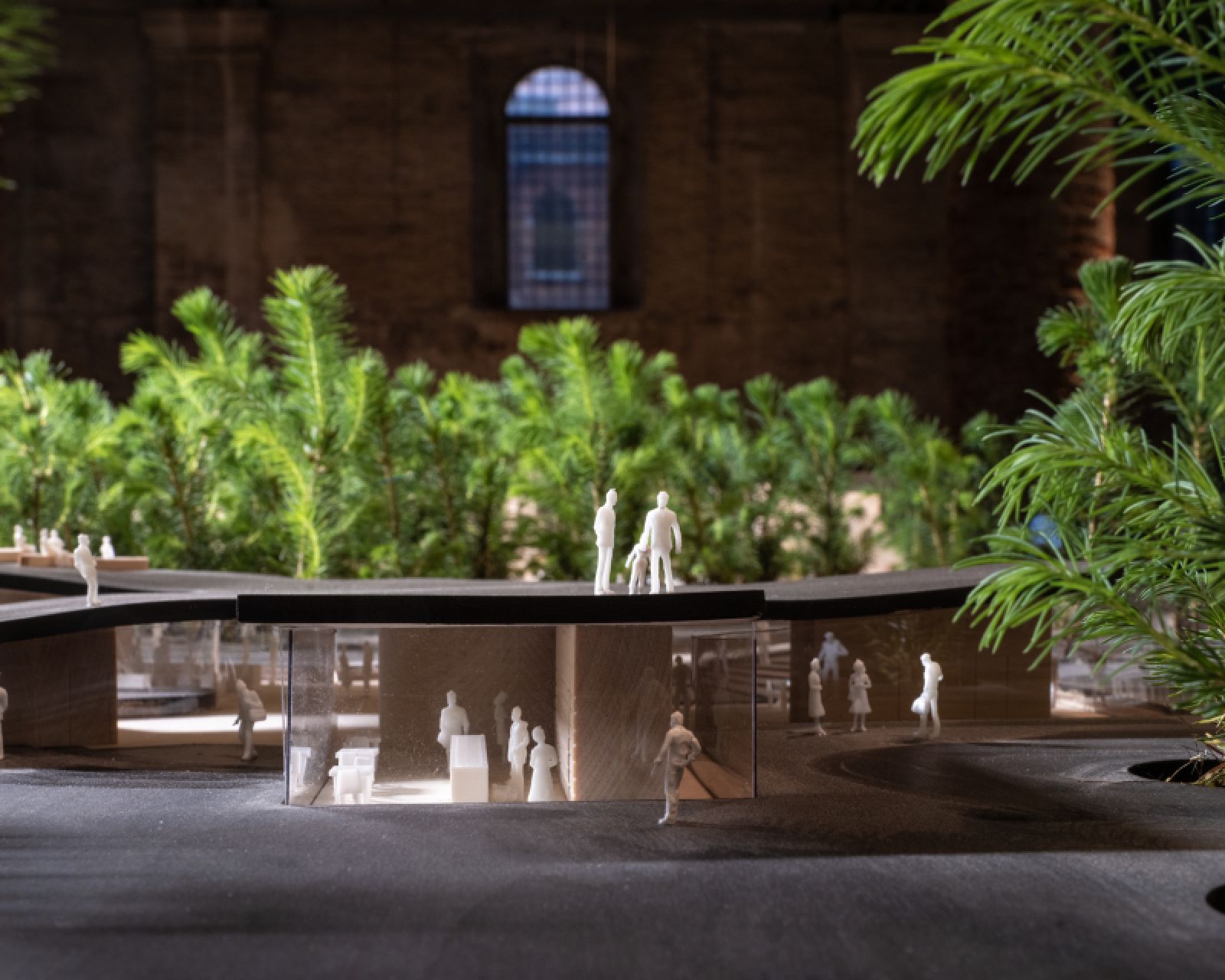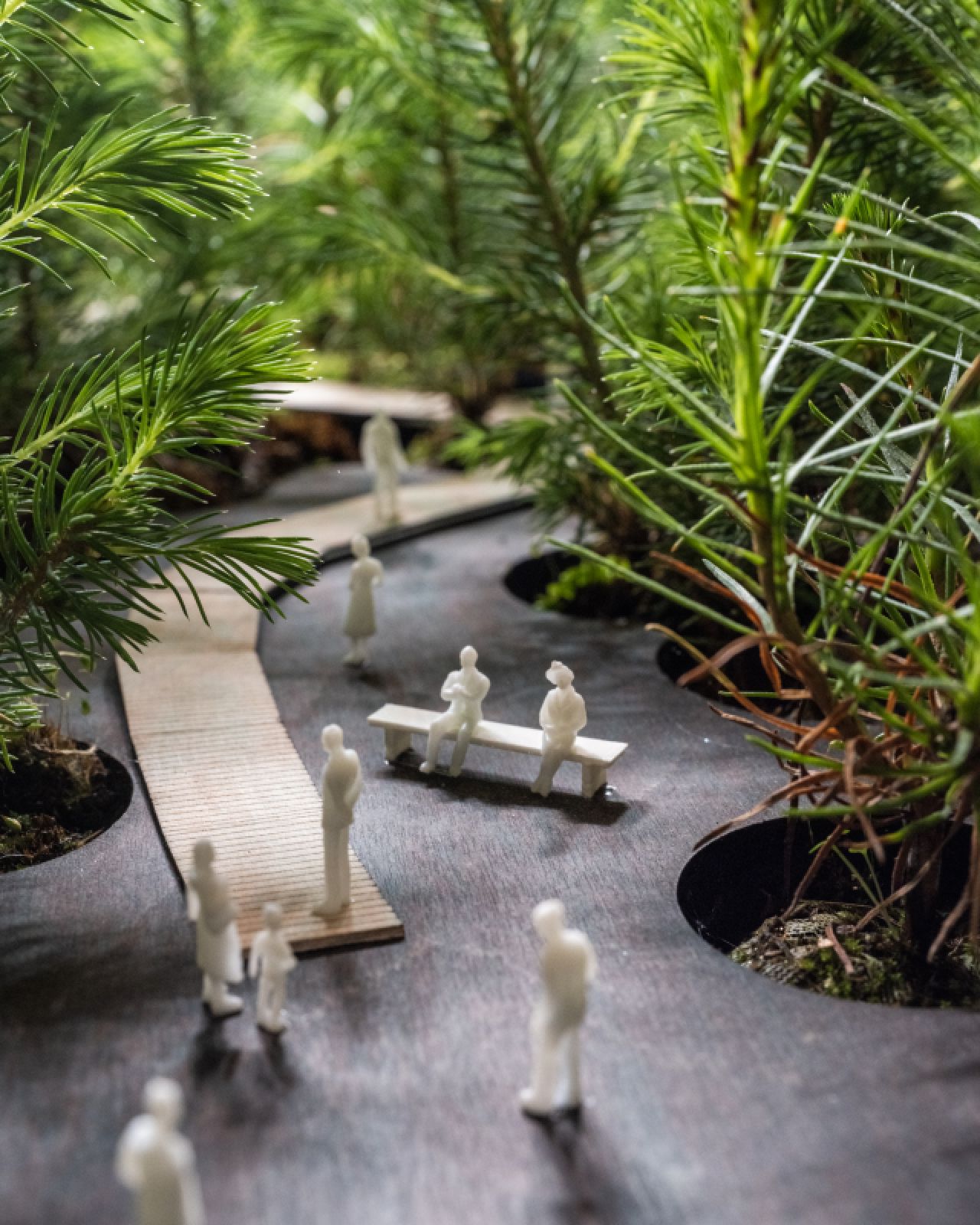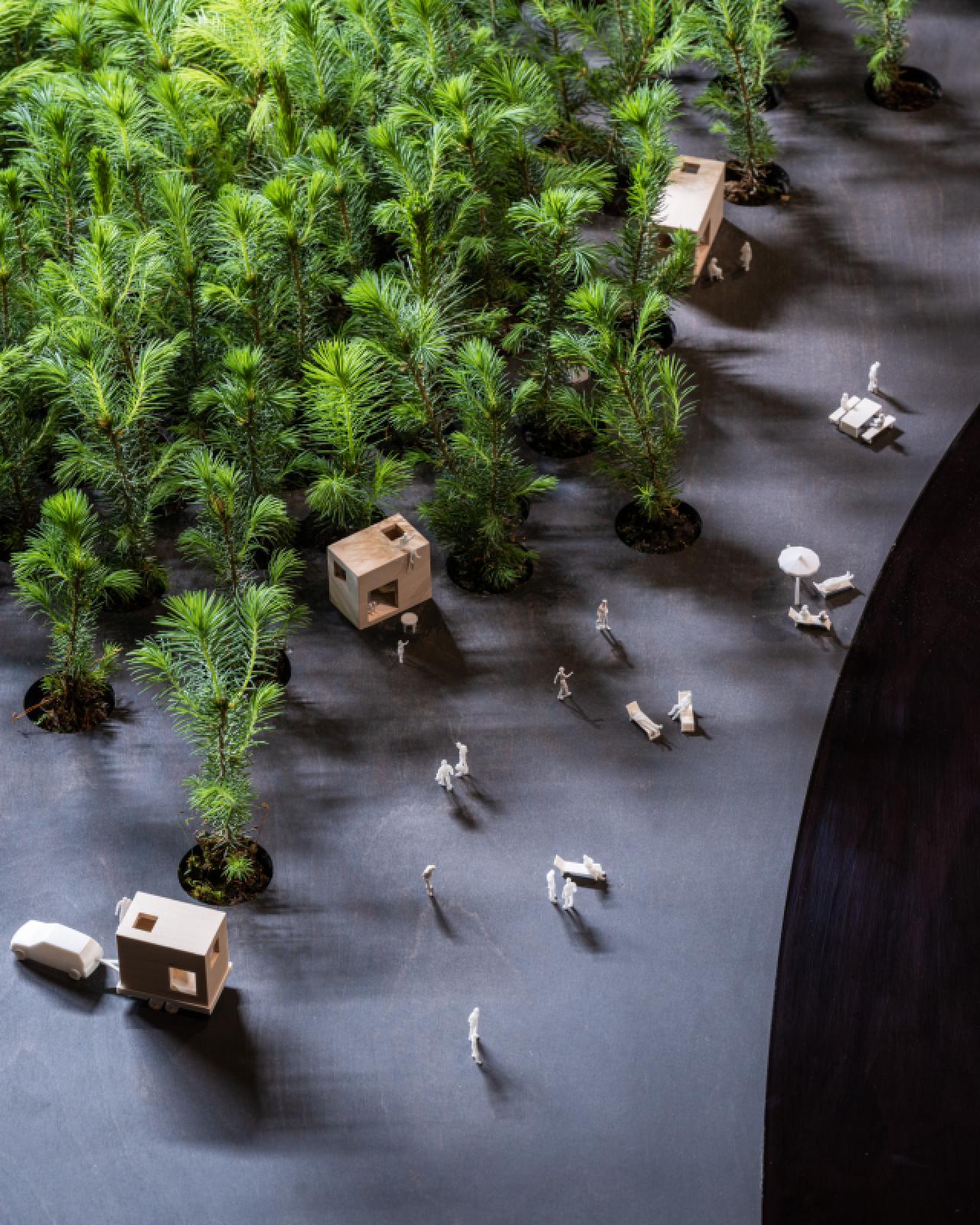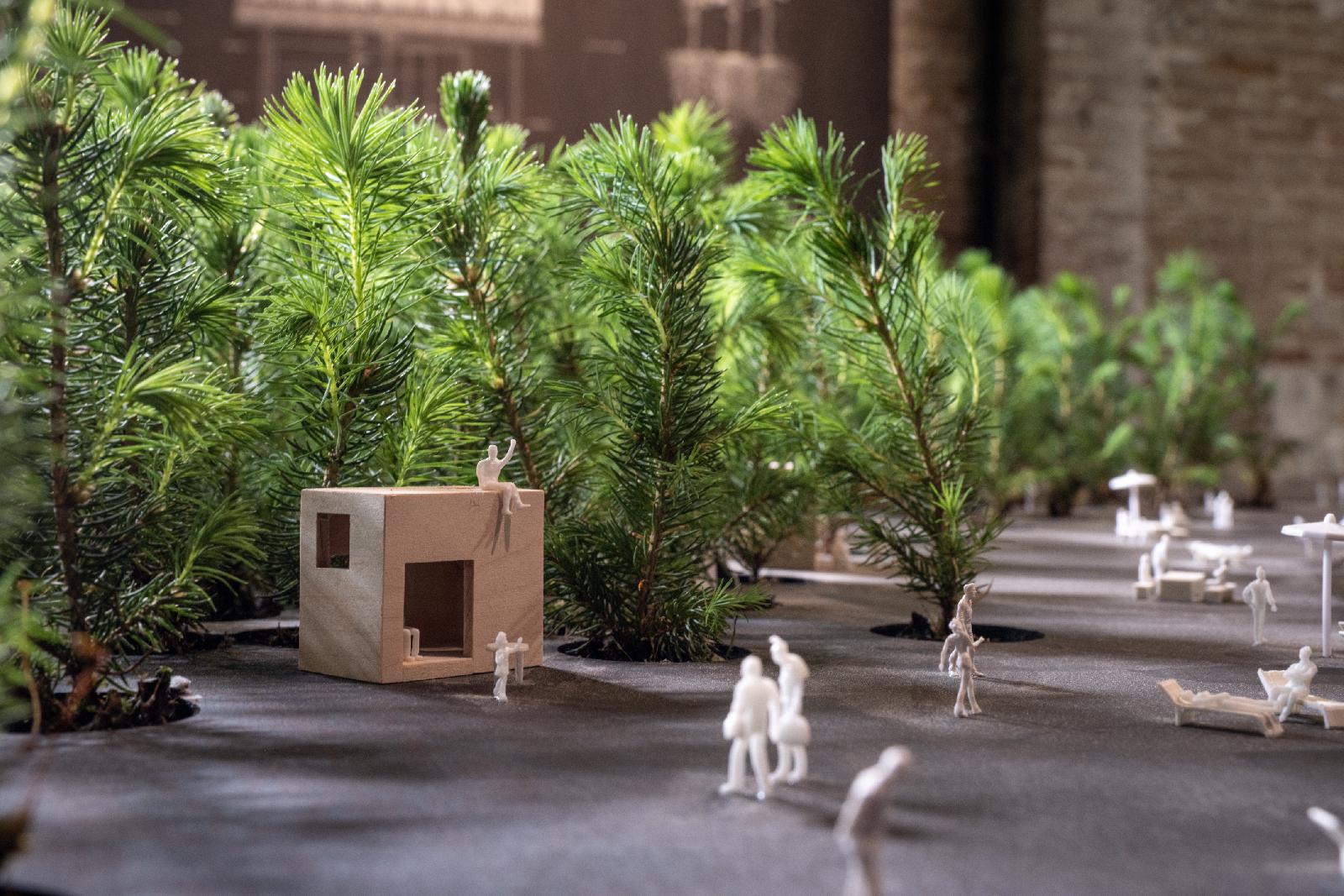EFFEKT Architects have been invited to exhibit their work at the 17th International Architecture Exhibition, La Biennale di Venezia curated by architect and scholar Hashim Sarkis. The exhibition will run from the 22nd of May to the 21st of November 2021 and responds to the overarching question “How will we live together?”
As part of the section focusing on communities, EFFEKT’s installation showcase a series of forward-thinking projects of various scale, typology, and contextual setting. The projects are juxtaposed and implanted in a fictional landscape of living trees. The architectural prototypes embodying the values of the firm were selected to spark curiosity in the visitors and promote discussion regarding new, resource-efficient ways of living and building.
The projects seek to explore how we can design future communities rooted in the principles of nature. By asking ourselves the right questions and collaborating across sectors on projects such as these, EFFEKT strives to bridge the gap between cities and natural ecosystems for the mutual benefit of both human and non-human life. Entitled “Ego to Eco”, EFFEKT´s installation takes shape as a physical representation of a natural ecosystem, populated by 7 research and design projects conceived by EFFEKT during recent years.
These projects offer potential solutions to the challenges of today and depict what it means to think and design ecosystems. They investigate new ideas for living and building, for producing, consuming and revitalizing the ecosystems we are part of and depend upon. The selected projects respond to urgent questions such as:
- How can buildings work like ecosystems? (reference project: Urban Villages)
- Can real estate development enable ecological restoration? (reference project: Nature Village)
- Can architecture help people reconnect with nature? (reference project: The Forest Tower)
- Can marine food production help revitalize our waterfronts? (reference project: Harbour Farm)
- How can we provide accommodation that leaves no trace? (reference project: Anywhere)
- How can we live more sustainable, connected and healthy? (reference project: Build for Life)
- Can a closer relationship to nature improve learning? (reference project: Forest Learning Hub)
At the heart of the installation lies a miniature forest of 1200 tree seedlings which will grow throughout the course of the exhibition thanks to a hydroponic growing system controlled remotely from Copenhagen. The recirculating irrigation technology pumps water and nutrients to the roots of the plants through an ebb-and-flow Growtable. Excess water is drained and collected in a tank underneath the Growtable.
Pressure, humidity, and temperature sensors are connected to a controller box, that enables real-time monitoring and operation of the system, offering optimal growing conditions for the plants. The 1-year-old trees of of Pinus Sylvestris, Picea Abies, Pinus Sitchensisa and Larix Eurolepis will grow over the course of 6 months and will be planted out at the end of the exhibition as a part of the development of Nature Village project, an urban forestation project in Denmark, absorbing more than 1000 tons of CO2 over 50 years.
Ego to Eco is built upon the idea of creating an exhibition with a lasting positive impact. This way of thinking and designing is an approach and methodology applied by EFFEKT in all their projects in recent years of practice. Considering social, environmental and economic aspects of any project can help address some of the greatest challenges we face as a result of our human existence. Using this approach, the office aims to create liveable, sustainable and affordable communities and mixed-use masterplans around the world. Source and photos Courtesy of EFFEKT.

